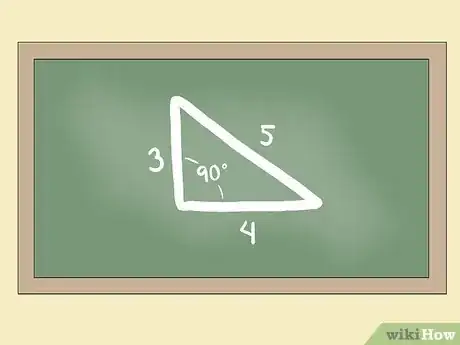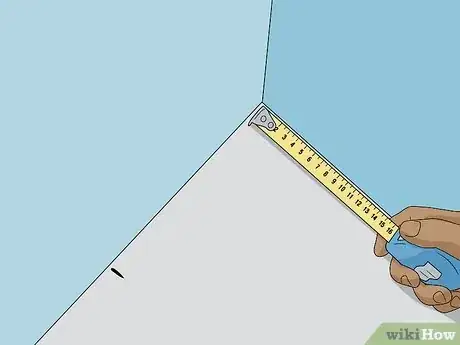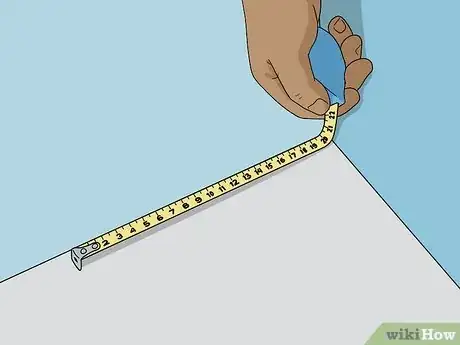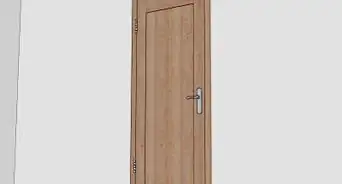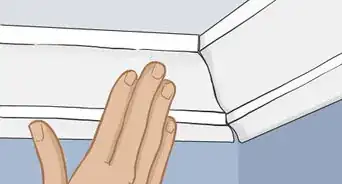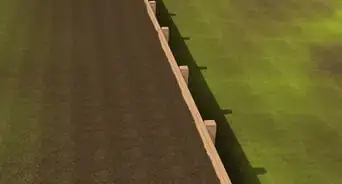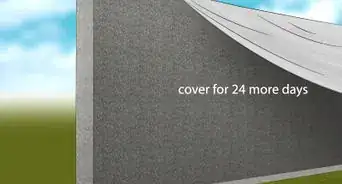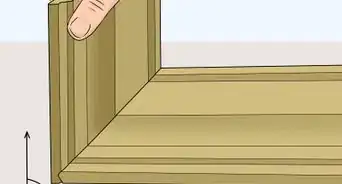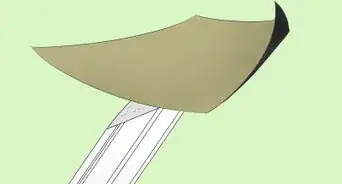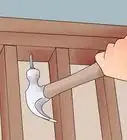This article was co-authored by Mark Spelman. Mark Spelman is a General Contractor based in Austin, Texas. With over 30 years of construction experience, Mark specializes in constructing interiors, project management, and project estimation. He has been a construction professional since 1987.
wikiHow marks an article as reader-approved once it receives enough positive feedback. This article received 16 testimonials and 94% of readers who voted found it helpful, earning it our reader-approved status.
This article has been viewed 1,086,033 times.
One of the challenges when creating corners is getting them square. While your room doesn't need to be perfectly square, it's best to get corners as close to 90 degrees as possible. If not, any tile or carpet laid will be noticeably 'off' from one side of the room to the other. The 3-4-5 method is also useful for smaller carpentry projects, ensuring that all your parts will fit together as planned.
Steps
Using the 3-4-5 Rule
-
1Understand the 3-4-5 method. If a triangle has sides measuring 3, 4, and 5 feet (1.5 m) (or any other unit), it must be a right triangle with a 90º angle between the short sides. If you can "find" this triangle in your corner, you know the corner is square. This is based on the Pythagorean Theorem from geometry: A2 + B2 = C2 for a right triangle. C is the longest side (hypotenuse) and A and B are the two shorter "legs."
- 3-4-5 is a very convenient measurement to check because of the low, whole numbers. The math checks out: 32 + 42 = 9 + 16 = 25 = 52.
-
2Measure three units from the corner along one side. You can use feet, meters, or any other unit. Draw a mark at the end of three units.
- You can multiply each number by the same amount and still use this. Try 30-−40–50 centimeters (−16–20 in) if using the metric system. For a large room, use 6-8-10 or 9-−12–15 feet (−3.7–4.6 m) or meters.[1]
Advertisement -
3Measure four units along the other side. Using the same unit, measure along the second side, at – hopefully – a 90º angle to the first. Mark this point at four units.[2]
-
4Measure the distance between your marks. If the distance is 5 units, your corner is square.[3]
- If the distance is less than 5 units, your corner is less than 90º. Move the sides apart.
- If the distance is over 5 units, your corner has a measurement of more than 90º. Bring the sides closer together. You can use a framing square as a guide when you do this.
- Once you’ve got a square corner, you can check the room’s other three corners to ensure they’re the same.
Expert Q&A
-
QuestionSo, I should measure 3 ft on one side, 4 ft on the other side, and 5 ft for the center to get a square corner?
 Mark SpelmanMark Spelman is a General Contractor based in Austin, Texas. With over 30 years of construction experience, Mark specializes in constructing interiors, project management, and project estimation. He has been a construction professional since 1987.
Mark SpelmanMark Spelman is a General Contractor based in Austin, Texas. With over 30 years of construction experience, Mark specializes in constructing interiors, project management, and project estimation. He has been a construction professional since 1987.
Construction Professional Yes. Your longest side (hypotenuse) should measure 5 feet from point to point.
Yes. Your longest side (hypotenuse) should measure 5 feet from point to point. -
QuestionWhat is the square footage of a 30 x 40 building?
 Mark SpelmanMark Spelman is a General Contractor based in Austin, Texas. With over 30 years of construction experience, Mark specializes in constructing interiors, project management, and project estimation. He has been a construction professional since 1987.
Mark SpelmanMark Spelman is a General Contractor based in Austin, Texas. With over 30 years of construction experience, Mark specializes in constructing interiors, project management, and project estimation. He has been a construction professional since 1987.
Construction Professional The square footage of a 30 foot x 40 foot building is 1,200 square feet.
The square footage of a 30 foot x 40 foot building is 1,200 square feet.
Things You'll Need
- Tape measure
- Pencil
References
- ↑ https://www.aconcordcarpenter.com/the-3-4-5-method-for-squaring-corners.html
- ↑ http://www.nzdl.org/gsdlmod?e=d-00000-00---off-0hdl--00-0----0-10-0---0---0direct-10---4-------0-1l--11-en-50---20-about---00-0-1-00-0--4----0-0-11-10-0utfZz-8-00&a=d&cl=CL1.18&d=HASH01703882bfe77f56052da7e0.10.3
- ↑ http://thecraftsmanblog.com/getting-square-with-the-345-triangle/
- ↑ http://www.thisoldhouse.com/toh/skill-builder/0,,20220544,00.html
About This Article
To build square corners with the 3-4-5 rule, first measure 3 units from the corner on 1 side. Turn in a perpendicular direction from the first line and measure 4 units. Then, measure the diagonal between the ends of your 2 lines. If it measures 5 units, your corner is square. If it's less than 5 units, your corner is less than 90 degrees; if it's greater than 5 units, your corner angle is too large. For more tips and an explanation of the math behind the 3-4-5 rulel, read on!
